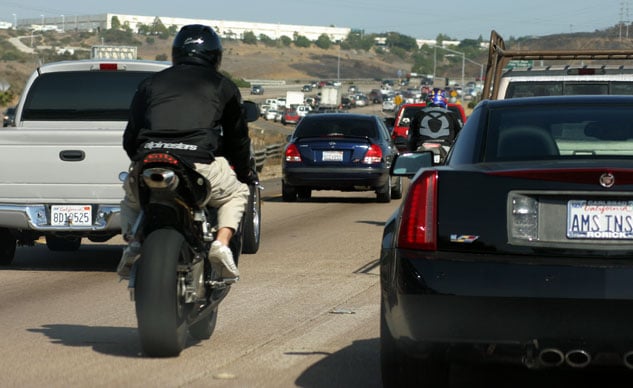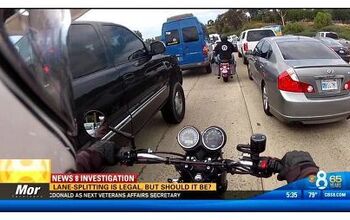Preliminary Lane-Splitting Safety Report Released
Since posting our Truth About Lane-Splitting article one year ago, we’ve been waiting for UC Berkeley to complete its lane-splitting-specific study on the safety aspects of the practice. Recently, a preliminary report “Safety implications of lane-splitting among California motorcyclists involved in collisions” was released. The full report is scheduled for public consumption by the first of the next year, but the preliminary report sheds some light on the safety of lane-splitting in California.
Conducted between June 2012 and August 2013 the report focused on approximately 8,000 motorcyclists and whether the motorcyclist was lane-splitting and whether the lane-splitting was done within the components of proposed lane-splitting guidelines. The data collected included driver license status, whether the motorcyclist was lane-splitting, speed of the motorcycle, speed of surrounding traffic, helmet type, helmet standard labeling (DOT, Snell, etc), helmet damage, helmet retention, body region injured, fatality status, whether the rider was transported by EMS, BAC, and the use of high visibility or reflective gear.
In the report, lane-splitting motorcyclists are referred to as LSM. Here’s what the report has to say regarding the safety of lane-splitting and those who participate in the practice.
- Of the 7,836 motorcyclists, (22%) were known to be unlicensed. The proportion of motorcyclists that were unlicensed was moderately lower among LSM (18%) than among other motorcyclists (22%).
- LSM were less likely to be rear-ended by another vehicle (2.7%) than were other motorcyclists (4.6%).
- LSM, on the other hand, were much more likely to have rear-ended another vehicle (36.4%) than were other motorcyclists (14.9%).
- The prevalence of alcohol use was lower among LSM (1.3%) than it was among other motorcyclists (3.3%).
- Among LSM, 14.6% of collisions occurred on a Saturday or Sunday, compared with 34.9% of collisions among non-lane-splitting motorcyclists.
- 59.5% of LSM were involved in collisions between 6-8:59 am or 3-5:59 pm, compared with 37.3% of motorcyclists who were not lane- splitting.
- LSM were more likely to be wearing a full-face helmet than other motorcyclists (79% and 64%, respectively) and less likely to be wearing a novelty helmet (1.9% and 4.1%, respectively). Motorcyclists who were not lane-splitting were more likely to wearing a 1/2- or 3/4-helmet (23%) than LSM (13%).
- LSM were notably less likely to suffer head injury (9.1% vs 16.5%), torso injury (18.6% vs 27.3%), or fatal injury (1.4% vs 3.1%) than other motorcyclists.
A former Motorcycle.com staffer who has gone on to greener pastures, Tom Roderick still can't get the motorcycle bug out of his system. And honestly, we still miss having him around. Tom is now a regular freelance writer and tester for Motorcycle.com when his schedule allows, and his experience, riding ability, writing talent, and quick wit are still a joy to have – even if we don't get to experience it as much as we used to.
More by Tom Roderick




























Comments
Join the conversation